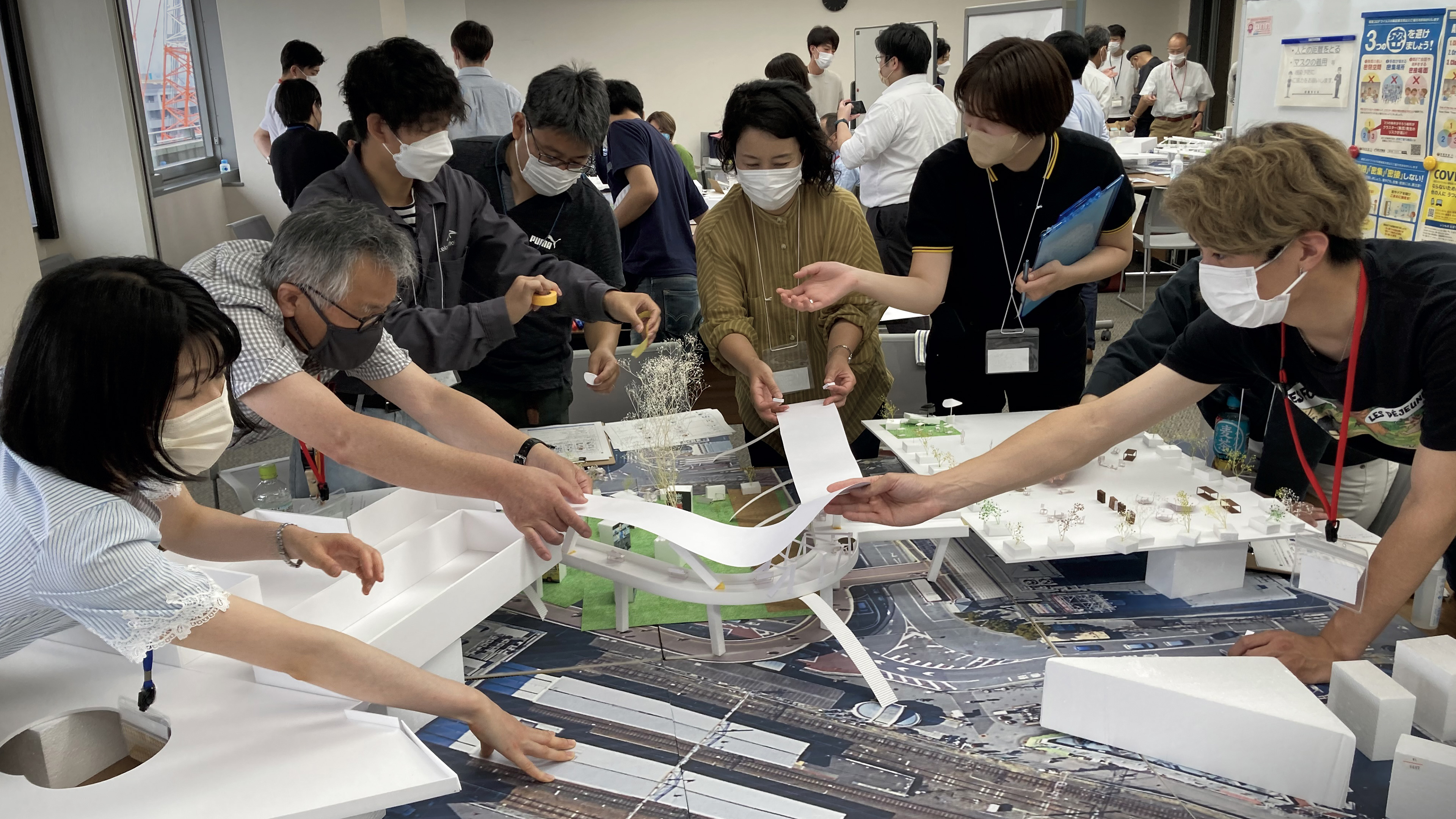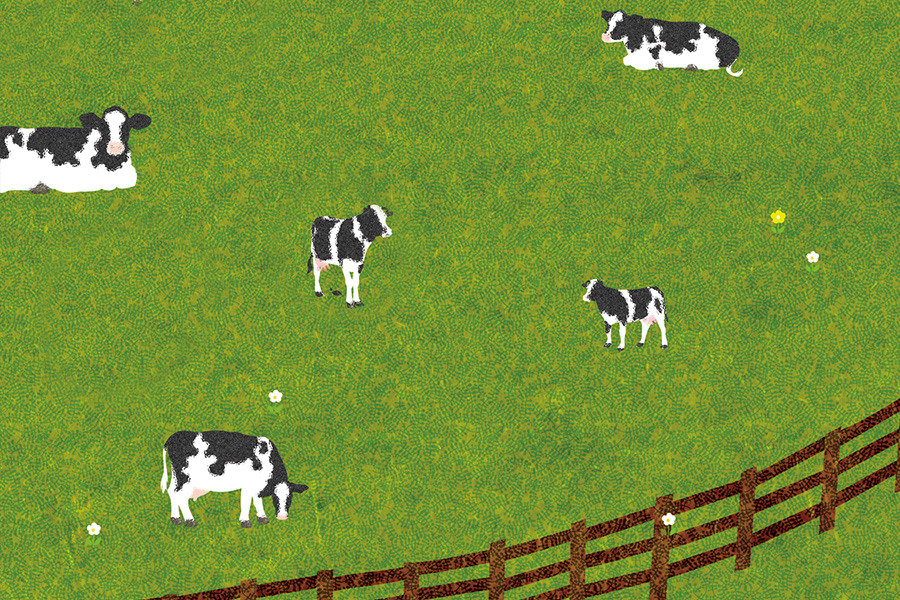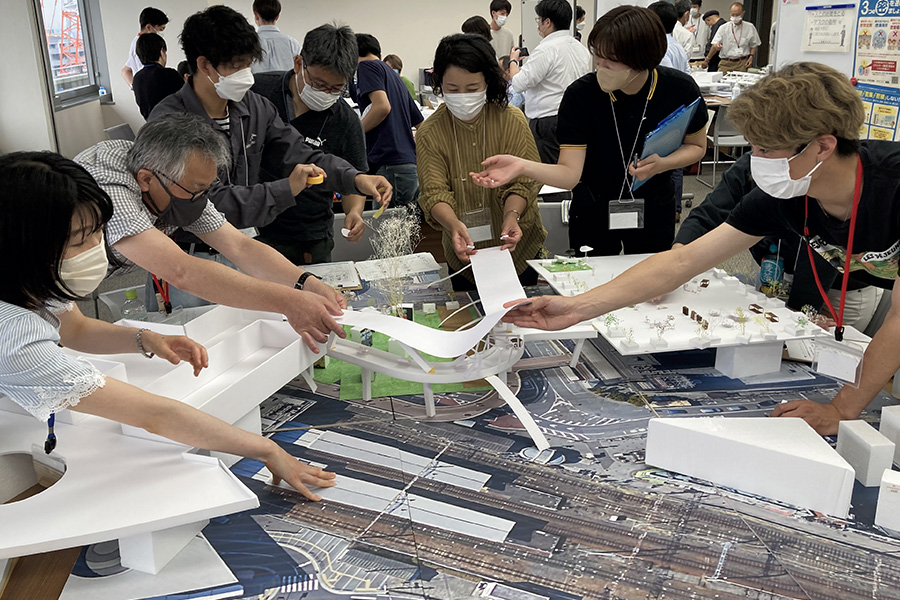STORY #7
Community-driven
Urban Design
Toshihiko Abe, Ph.D.
Associate Professor, College of Science and Engineering
Listening to Diverse Perspectives
and Exploring the Path
to Consensus in Urban Design
The JR Minami-Kusatsu Station in Kusatsu City, Shiga Prefecture, was first built at the same time as the opening of the Ritsumeikan University Biwako-Kusatsu Campus nearly 30 years ago, and the area has developed over those years. However, the functions and design of the area have gradually become outdated and no longer meet modern needs. In response, the local government is devising ways to concentrate urban functions around the railway station and transform the area into a sustainable city. Also contributing to these efforts through research and activities in collaboration with the government to revitalize the campus town in the capacity of a researcher is Toshihiko Abe.
Abe’s practical research encompasses various fields, including architectural design, urban design, community design, and urban development. In particular, Abe emphasizes the importance of involving local residents in community-driven urban development. “I believe it is crucial for diverse parties such as citizens, government officials, and experts to work together to design urban spaces,” he says. However, the more diverse people get involved, the more difficult it becomes to reach a consensus. In the context of urban development, which can often be slow to progress, what methods can be used to adequately capture the opinions and concerns of residents, unify conflicting opinions, and translate them into a highly feasible design? Abe is exploring ways to build consensus for community development, including developing participatory workshops where residents can contribute their ideas and perspectives.
As part of the efforts to revitalize the area around JR Minami-Kusatsu Station, he has been actively seeking out opportunities to listen to the opinions and perspectives of local residents and users. “From September to December 2021, we held a workshop (WS) aimed at resident participation at the Urban Design Center Biwako-Kusatsu (UDCBK), a hub for promoting community development through industry-academia-government collaboration in Kusatsu City. This WS was part of a preparation for a social experiment project consigned to Hiroharu Hochin, a research assistant at the College of Science and Engineering.” Abe served as the UDCBK’s deputy director and provided advice during the WS. A wide range of participants were invited, including Kusatsu City staff, office workers and students who use the station, and local residents, to share their opinions and ideas.
In the four WS sessions, they collected the participants’ opinions using methods called Model WS and Flag-pinning WS, and at the same time, they tried to verify the effectiveness of these methods. The Model WS, in which participants discuss while looking at a model, effectively develops a concrete image of the design while confirming the three-dimensional arrangements. Using this model allows for the free expression and sharing of ideas with the participants. In the Flag-pinning WS, flags that are color-coded by function and flags with such photos as commercial facilities, parks, and houses are displayed on models and maps. “The advantage of this is that it is clear at a glance what is desired and has the participants state, ‘I want a facility like this here.’ Furthermore, they are asked to specifically state on the flags why it is necessary and who will build and operate it. This allows for highlighting what is truly needed in the area, rather than just insisting on what is wanted.” By having people from diverse backgrounds participate and share concrete images while exchanging opinions, it is possible not only to highlight needs and ideas that cannot be conceived by the government alone but also to evaluate the feasibility of such projects.
“While there are other ways of collecting opinions and requests, such as through questionnaire surveys and town hall briefings, the workshop format can foster a sense of ownership and attachment among residents towards the completed building and community. This leads to developing a city that will be cherished and valued for a long time,” Abe explains the effectiveness of such WSs.
After analyzing the opinions collected from participants during the WS, it became clear that there is a need for a place where residents and students can relax, interact, and engage in various activities. These insights will be incorporated into future urban designs.

Minami-Kusatsu Station Ekimae Workshop

Social Experiment at Minami-Kusatsu Station Ekimae
Various issues face the region, including preserving history, culture, and landscape, revitalizing the region, and addressing the problem of unoccupied houses. Additionally, there is a need for disaster prevention and pre-emptive reconstruction efforts. After the Great East Japan Earthquake in 2011, Abe became involved in community development in the Naiwan (Inner Bay) District of Kesennuma City, Miyagi Prefecture, which was undergoing reconstruction. This prompted him to focus on pre-emptive disaster reconstruction efforts. Pre-emptive reconstruction involves taking measures in advance to ensure a quick recovery in the event of a disaster that causes extensive damage. “For example, building levees tens of meters high is not realistic just because you are worried about a tsunami. It is necessary to consider both conveniences during normal times and adaptability in the event of a disaster,” Abe says.
Katashima district, Sukumo City, Kochi Prefecture, took upon the challenge to achieve both these requirements. This district is working on a town-wide pre-emptive reconstruction development project in preparation for the expected major earthquake in the Nankai Trough. “Despite government efforts to explain the construction of a levee through a series of public meetings, many residents were not convinced. Abe and his students went to the site and set up a council with local residents to create a forum for resident-led discussion. Based on the residents’ opinions, they proposed a waterfront landscape that would be compatible with disaster prevention and the promotion of coastal life and fishing.
“Towns are created by their residents.” Based on this conviction, Abe will continue to take on the challenge of giving shape to the thoughts and opinions voiced in each region.

Seawall in Kesennuma (Photo by Kato Masayuki Photography Office)


- Toshihiko Abe, Ph.D.
- Associate Professor, College of Science and Engineering
- Research Themes: Revitalization of central areas of local cities; Disaster mitigation and pre-emptive reconstruction in preparation for great earthquakes; Research on community development action research on themes such as the revitalization of public spaces and public facilities such as station plazas and parks, Received the Planning and Design Award of the City Planning Institute of Japan, the President’s Award of the Urban Housing Society, and the Good Design Award, among others, for the reconstruction town development of the Naiwan (Inner bay) District of Kesennuma City, Miyagi Prefecture
- Specialties: Urban design; community development; architectural design


























